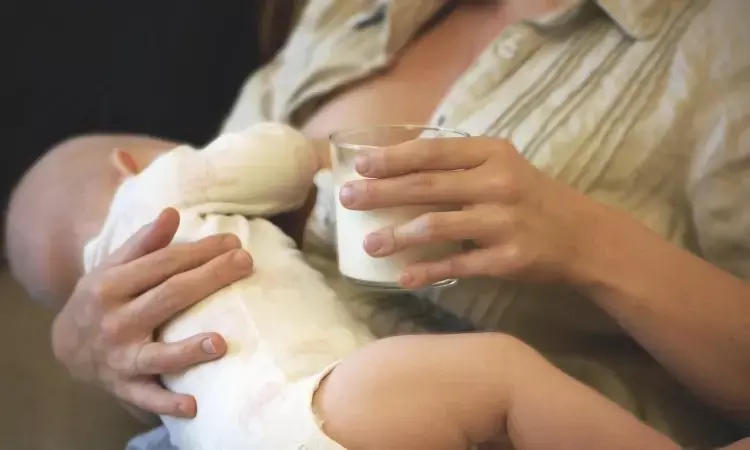- Home
- Medical news & Guidelines
- Anesthesiology
- Cardiology and CTVS
- Critical Care
- Dentistry
- Dermatology
- Diabetes and Endocrinology
- ENT
- Gastroenterology
- Medicine
- Nephrology
- Neurology
- Obstretics-Gynaecology
- Oncology
- Ophthalmology
- Orthopaedics
- Pediatrics-Neonatology
- Psychiatry
- Pulmonology
- Radiology
- Surgery
- Urology
- Laboratory Medicine
- Diet
- Nursing
- Paramedical
- Physiotherapy
- Health news
- Fact Check
- Bone Health Fact Check
- Brain Health Fact Check
- Cancer Related Fact Check
- Child Care Fact Check
- Dental and oral health fact check
- Diabetes and metabolic health fact check
- Diet and Nutrition Fact Check
- Eye and ENT Care Fact Check
- Fitness fact check
- Gut health fact check
- Heart health fact check
- Kidney health fact check
- Medical education fact check
- Men's health fact check
- Respiratory fact check
- Skin and hair care fact check
- Vaccine and Immunization fact check
- Women's health fact check
- AYUSH
- State News
- Andaman and Nicobar Islands
- Andhra Pradesh
- Arunachal Pradesh
- Assam
- Bihar
- Chandigarh
- Chattisgarh
- Dadra and Nagar Haveli
- Daman and Diu
- Delhi
- Goa
- Gujarat
- Haryana
- Himachal Pradesh
- Jammu & Kashmir
- Jharkhand
- Karnataka
- Kerala
- Ladakh
- Lakshadweep
- Madhya Pradesh
- Maharashtra
- Manipur
- Meghalaya
- Mizoram
- Nagaland
- Odisha
- Puducherry
- Punjab
- Rajasthan
- Sikkim
- Tamil Nadu
- Telangana
- Tripura
- Uttar Pradesh
- Uttrakhand
- West Bengal
- Medical Education
- Industry
Breastfeeding tied to lower risk of NAFLD in parous women: Study

CAPTION
New research from Chalmers University of Technology shows that children of mothers who drink relatively more cow's milk during breastfeeding are at reduced risk of developing food allergies.
CREDIT
John Browne/Chalmers University of Technology
Seoul, Korea: A recent study published in the journal Hepatology suggests the protective effect of breastfeeding against nonalcoholic fatty liver disease (NAFLD) in later life of parous women.
The multiple effects of breastfeeding on maternal health outcomes have been demonstrated in previous studies. However, there is no clarity on the effect of breastfeeding on NAFLD in parous women. Considering this, Geum-Youn Gwak, Samsung Medical Center Sungkyunkwan University School of Medicine, and colleagues aimed to assess the association between breastfeeding and NAFLD.
For this purpose, the researchers assessed a total of 6,893 Korean parous women aged 30-50 years who participated in the Korean National Health and Nutrition Examination Survey. Lactation duration was calculated by dividing the total lactation period by the number of breastfed children. The hepatic steatosis index was used to define NAFLD.
Based on the study, the researchers found the following:
- Of 6,893 women, 1,049 (15.2%) had NAFLD.
- Prevalence of NAFLD was 18.3%, 14.3%, 12.3%, 14.4%, and 15.8% in women with a breastfeeding period of <1, ≥1-<3, ≥3-<6, ≥6-<12, and ≥12 months, respectively.
- In a fully adjusted model, breastfeeding (≥1 month) was associated with reduced NAFLD prevalence (OR, 0.67) after adjusting for metabolic, socioeconomic, and maternal risk factors.
- Fully adjusted ORs decreased with an increase of breastfeeding duration: 0.74, 0.67, and 0.64 for women with ≥1-<3, ≥3-<6, ≥6-<12, and ≥12 months of breastfeeding duration, respectively, compared to women with <1 month of breastfeeding duration. Such an association was also observed in all predefined subgroups without interaction.
To conclude, breastfeeding showed a protective effect against NAFLD in later life of parous women, suggesting a maternal benefit of breastfeeding on NAFLD. The risk was further reduced by increasing breastfeeding duration.
Reference:
Park Y, Sinn DH, Oh JH, Goh MJ, Kim K, Kang W, Paik YH, Choi MS, Lee JH, Koh KC, Paik SW, Gwak GY. The Association Between Breastfeeding and Nonalcoholic Fatty Liver Disease in Parous Women: A Nation-wide Cohort Study. Hepatology. 2021 Dec;74(6):2988-2997. doi: 10.1002/hep.32034. Epub 2021 Jul 26. PMID: 34192367.
Dr Kamal Kant Kohli-MBBS, DTCD- a chest specialist with more than 30 years of practice and a flair for writing clinical articles, Dr Kamal Kant Kohli joined Medical Dialogues as a Chief Editor of Medical News. Besides writing articles, as an editor, he proofreads and verifies all the medical content published on Medical Dialogues including those coming from journals, studies,medical conferences,guidelines etc. Email: drkohli@medicaldialogues.in. Contact no. 011-43720751


